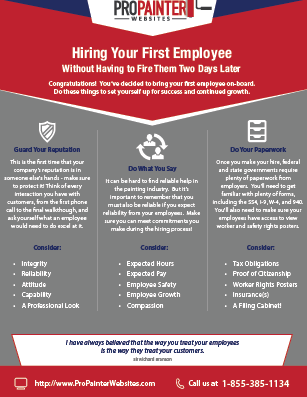Learn Just How Seasonal Elements Influence Business Outside Paint Success And Find The Best Times To Guarantee Lasting Outcomes For Your Task
Learn Just How Seasonal Elements Influence Business Outside Paint Success And Find The Best Times To Guarantee Lasting Outcomes For Your Task
Blog Article
Material Writer-McLamb Rosendal
When you're preparing a business outside painting project, seasonal factors can make or break your outcomes. You'll intend to take into consideration how temperature and humidity influence paint application and drying times. Selecting the best period can guarantee your paint sticks properly and lasts much longer. Yet which seasons are really the best for this sort of job? Allow's explore the key elements that can impact your job's success.
The Effect of Temperature Level on Paint Application
When you're preparing a commercial external painting job, the temperature level can substantially affect how well the paint sticks and dries out.
Ideally, you intend to paint when temperatures range between 50 ° F and 85 ° F. If it's as well cool, the paint may not treat correctly, resulting in issues like peeling off or fracturing.
On the flip side, if it's as well hot, the paint can dry too rapidly, preventing proper adhesion and resulting in an irregular surface.
You ought to likewise take into consideration the time of day; early morning or late afternoon uses cooler temperature levels, which can be more positive.
Constantly check the maker's referrals for the specific paint you're utilizing, as they usually provide advice on the perfect temperature level range for ideal results.
Humidity and Its Impact on Drying Times
Temperature level isn't the only environmental variable that influences your industrial exterior paint job; humidity plays a significant function as well. High humidity levels can decrease drying out times significantly, affecting the general high quality of your paint work.
When the air is saturated with dampness, the paint takes longer to heal, which can cause concerns like bad adhesion and a higher danger of mold growth. If have a peek at this web-site on a specifically damp day, be planned for extensive delay times in between coats.
It's essential to monitor regional weather conditions and plan appropriately. Ideally, aim for moisture degrees in between 40% and 70% for optimal drying.
Maintaining these consider mind guarantees your job stays on track and provides a long-term finish.
Best Seasons for Commercial Exterior Painting Projects
What's the best time of year for your industrial outside paint jobs?
Spring and early fall are typically your best bets. During these seasons, temperature levels are light, and humidity levels are usually reduced, developing ideal problems for paint application and drying.
Stay https://andersonoubin.digitollblog.com/34869739/the-all-inclusive-overview-for-your-forthcoming-commercial-outside-paint-task of summer season's intense heat, which can trigger paint to completely dry too promptly, resulting in poor bond and coating. In a similar way, wintertime's cool temperatures can impede correct drying out and treating, risking the long life of your paint job.
Go for https://damienlqvzf.wizzardsblog.com/34995041/eco-conscious-strategies-in-business-exterior-paint-a-concentrate-on-sustainability with temperatures between 50 ° F and 85 ° F for optimum outcomes. Bear in mind to check the regional weather report for rainfall, as damp problems can destroy your job.
Preparation around these factors ensures your paint job runs smoothly and lasts longer.
Final thought
To conclude, preparing your industrial exterior paint projects around seasonal factors to consider can make a substantial difference in the outcome. By organizing work during the optimal temperatures and moisture degrees, you'll guarantee much better attachment and drying out times. Keep in mind to keep an eye on neighborhood weather forecasts and select the right time of year-- springtime and very early fall are your best options. Taking these actions will aid you accomplish a long lasting and specialist surface that lasts.
